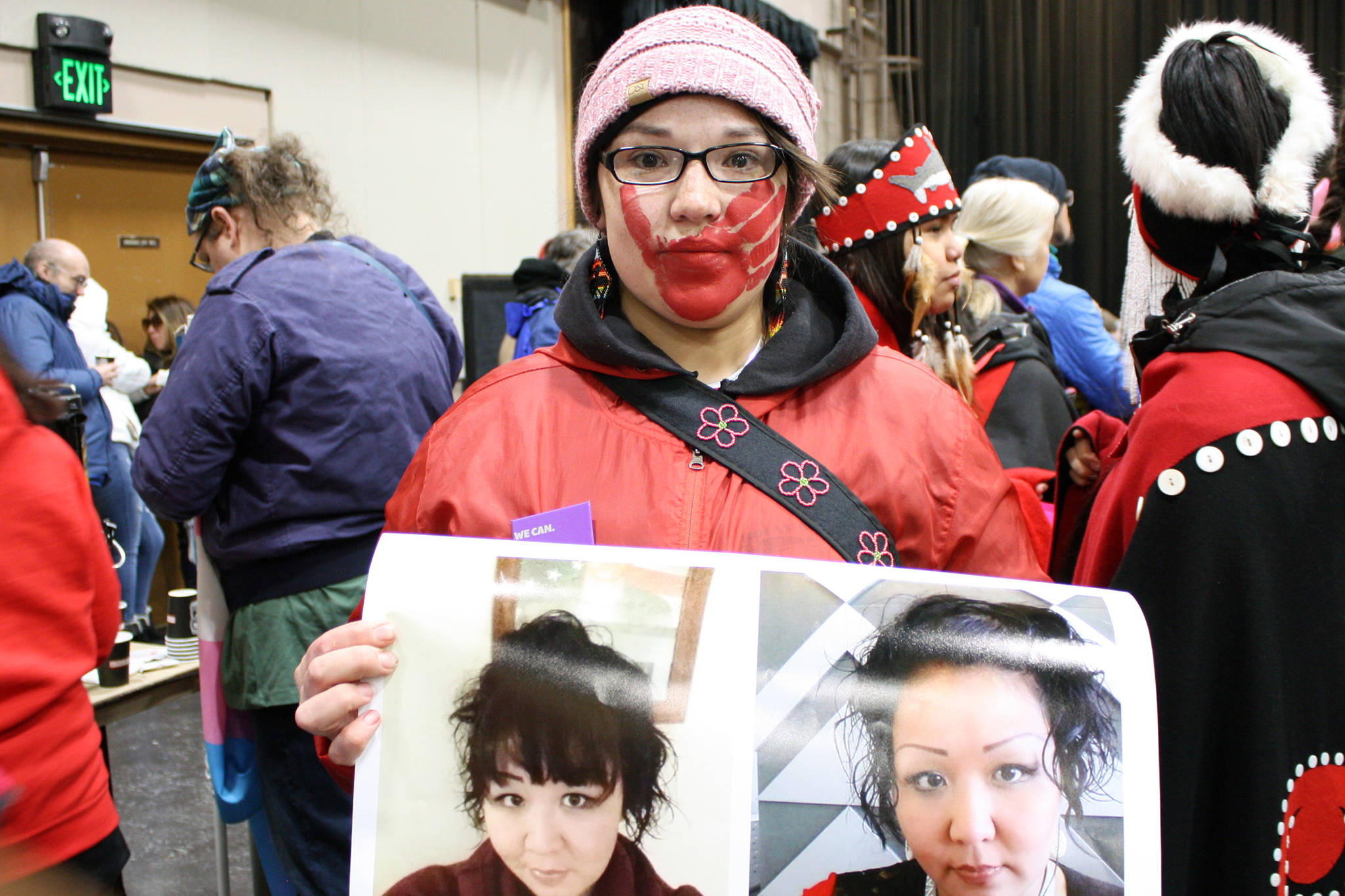By MARK THIESSEN
Associated Press
ANCHORAGE — Ida Rose Jacomet, 37, was last seen Oct. 2, 1975, at the Circle M Bar on an old highway near Fairbanks, Alaska. The only clue left behind was that her purse was found in the parking lot. If she is alive today, she would be 82.
Valerie Sifsof disappeared from a campground about 65 miles southeast of Anchorage, last seen by her boyfriend about midnight on July 7, 2012. Search teams tried in vain but never found Sisof or her body. She would be 51 years old, if she’s alive.
In the village of Fort Yukon, located just above the Arctic Circle 400 miles north of Anchorage, 62-year-old Lorraine Juanita Ginnis was spotted walking near her home Oct. 4, 2018. She hasn’t been seen since.
[Why they march: Juneau women tell us in their own words]
These women are among the hundreds of Alaska Native or American Indian women who have gone missing over the years, and in many instances, their cases have gone cold.
Now the Bureau of Indian Affairs Office of Justice Services is opening seven Operation Lady Justice Task Force cold case offices across the country to concentrate on the number of missing and murdered Indigenous women.
Tara Sweeney, the Department of Interior’s assistant secretary for Indian Affairs and an Inupiat from Utqiaġvik, the nation’s northernmost community and formerly known as Barrow, opened the Anchorage office Wednesday.
“I think as an Alaska Native woman, it’s extremely humbling to be able to work on an initiative that has impacted our community at levels beyond, I would say, the national level,” Sweeney said.
Cases for investigators will be pulled the FBI’s National Crime Information Center. In late July, when the first cold case office opened in Bloomington, Minnesota, the database indicated there were more than 1,500 unsolved cases of missing or murdered Indigenous women.
Alaska has about 300 cases. “That number leads the nation, sadly,” Sweeney said. Alaska also is among the states with the highest rates of violence against women.
Sweeney said she recently went through the database and could identify by last names alone where in Alaska they came from or family members that she personally knows.
“And I’m one person, and there are so many Alaska Natives that are impacted because of this epidemic,” she said.
She was very direct when asked what success for this initiative would look like.
“I’m just going to put it in very simple terms: Justice for victims and resolution and closure for families,” she said.
The cold case teams stem from the Operation Lady Justice Task Force, which was created by an executive order from President Donald Trump in November. It is a multi-agency effort led by Interior Secretary David Bernhardt and U.S. Attorney General William Barr.
There will be a special agent in charge of the Anchorage office and investigators. But it will require cooperation at every level.
“It’s a a multi-disciplinary team, which is going to include folks from all the different law enforcement agencies, our partners at FBI, the U.S. attorney’s office, as well as their state and local partners,” said Charles Addington, the deputy director for Bureau of Indian Affairs Office of Justice Services.
He added that personnel from social services agencies and tribal governments, people who “can be a help to bring these cases to bear,” will also be included.
Sweeney said the duties for the cold case officers will be to gather intelligence on missing and murdered cases, prioritize those cases for assignment to investigative teams, and develop plans to help guide investigators. This will include identifying outside resources, including social services, which could provide meaningful input and coordinating that with investigators.
“It’s important to manage expectations because the need is so great,” she said.
Besides Bloomington and Anchorage, other offices have opened in Rapid City, South Dakota; Billings, Montana; Albuquerque, New Mexico, and Sacaton, Arizona, just outside Phoenix. Arizona has the second highest count of cold cases, at about 240.
The seventh office is scheduled to open next month in Nashville.
• This is an Associated Press report.

